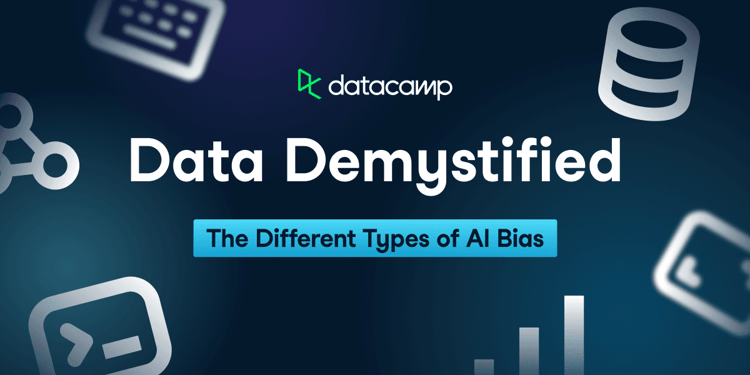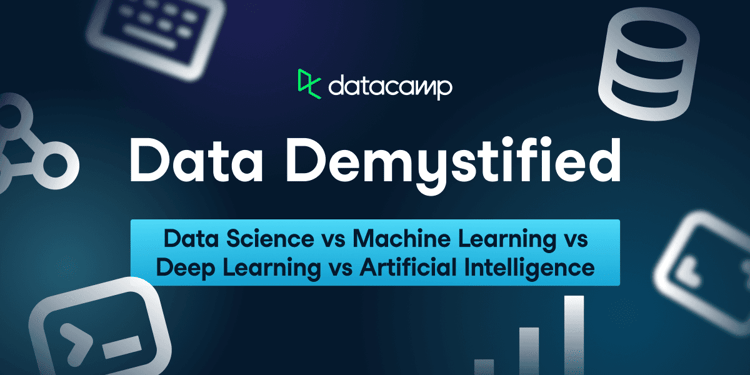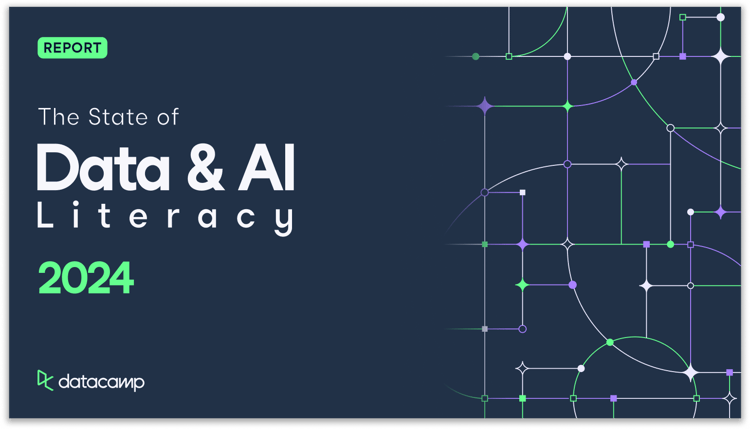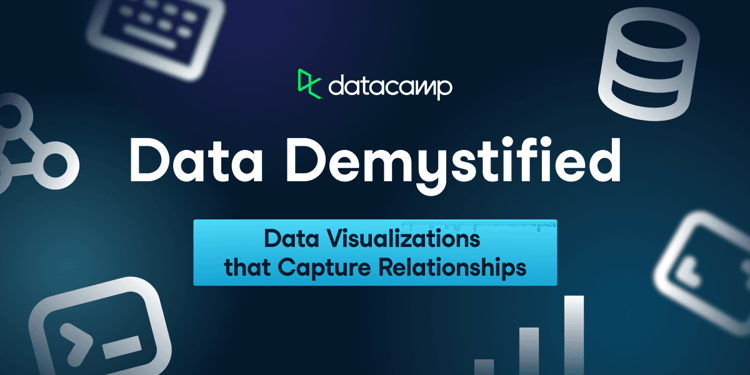Course
Welcome to part eleven of our month-long data demystified series. As part of Data Literacy Month, this series will clarify key concepts from the world of data, answer the questions you may be too afraid to ask, and have fun along the way. If you want to start at the beginning, read our first entry in the series: What is a Dataset?
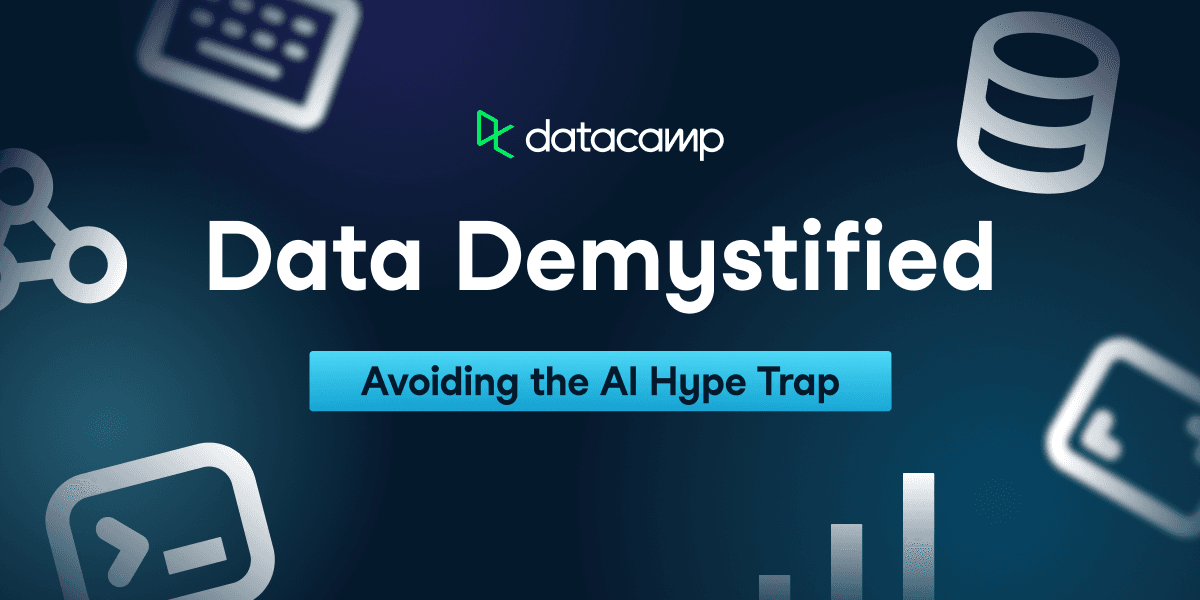
This week, we’ll take a deeper look at how AI is covered in the news and some of the pitfalls of AI everyone should be aware of. This blog post covers how AI can be sensationalized in the news and how to avoid falling into the AI hype trap.
If you want to familiarize yourself more with AI and the different jargon used in this space. In that case, we suggest looking at an earlier entry in the data demystified series on the difference between AI, machine learning, deep learning, and data science.
The Problem with the AI Hype Trap
Artificial intelligence (AI) has become ubiquitous and has found its way into many applications around us—be it the facial recognition-based phone unlock feature or a recommendation for the next product you might be interested in.
With significant developments in AI over the past few years, there has been significant media coverage of AI technologies and how it’s utilized in industry and academia. While this is generally welcome, this has increased the amount of hype around many of the latest advancements in the field. This dynamic has led to sensationalized coverage of the possibilities of current AI tools and technologies and their potential risk.
This sensationalized coverage can lead to three main risks when it comes to how the general public thinks about AI:
- False expectations of what AI tools and technologies are capable of, creating a false sense of optimism around where the technology is headed
- Sensationalized fear around automation and how AI tools and technologies will become “sentient.”
- Displaced attention from problems plaguing AI today and how to solve them
A Framework for Understanding AI Hype
A great framework to illustrate this dynamic in AI more broadly comes from Gartner's Hype Cycle, which showcases different phases of an emerging technology’s lifespan. Let us understand the maturity scale of AI referencing the hype cycle as explained below.
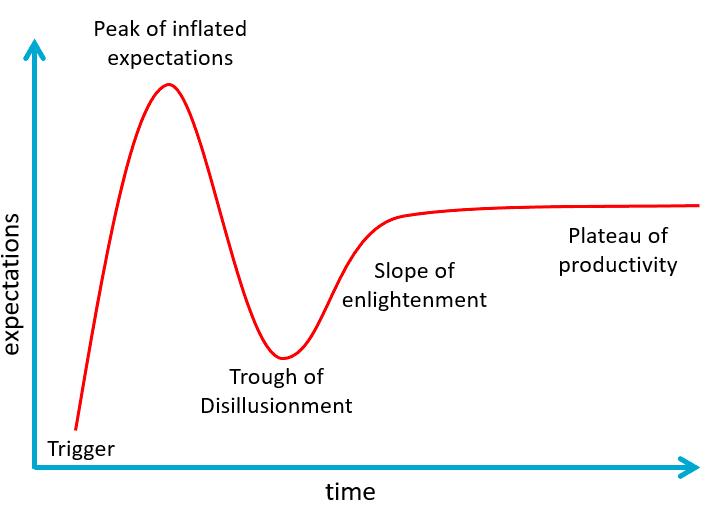
- The Hype Cycle starts with the “Trigger” stage, which talks about the universe of possibilities and spurs excitement about the new technology.
- The second phase is the peak where expectations have piled up and overstated possibilities start falling apart.
- The third phase hits bottom aptly called the “Trough of disillusionment”—is where the fantastic but challenging ideas fail to materialize. This is where reality sets in, and people give up on many powerful ideas in the face of what is practical to implement.
- The challenging phase is over with the onset of “The slope of enlightenment” phase, where limitations of the technology are overcome with innovative ideas leading to the final stage giving birth to whole new industries that serve humanity in unthinkable ways.
According to AI researchers at Google, machine learning and AI are somewhere between the trigger and the peak of inflated expectations. This means that many possibilities discussed in the news could very well be fantasy.
Examples of the AI Hype Trap
The hype trap shifts the attention of the general public from the actual problems plaguing AI to discussions like “machines gaining human consciousness” or “robots taking over the planet.” While it is good to be aware of all the possibilities and risks that come with AI tools and technologies, this discussion is not grounded in AI’s actual potential and risks.
Here are some examples illustrating the hype trap in action
- Lamda and Sentient AI: Google’s LaMDA project garnered headlines after the sensational claim by an engineer highlighting that the large language model has gained sentience. While LaMDA is indeed impressive, there is no evidence pointing to the fact that it is sentient. You can learn more about the underlying technology powering LaMDA in our Weekly Roundup.
- IBM Watson: IBM Watson was described for a long time as the ultimate tool to transform industries. However, as time went on, IBM Watson could not live up to the tall claims and fell victim to the technology hype.
- Sophia the Robot: Sophia is a sophisticated chatbot couched in a human-like robot. The chatbot has been packaged with a lot of focus on making it sound and appear like a human. While this technology is impressive, many fell into the trap of thinking that human-like robots have become reality.
The sensationalization of these news stories not only takes away the attention from useful use-cases of AI, such as predicting Covid-19 hotspots or providing merchants credit to open their businesses. It also takes away attention from the real risks plaguing AI today.
Many AI systems, such as the news feed, recommendation systems, and more, have become integral parts of our lives and shape our likes, dislikes, and more. These AI systems can be plagued with bias, affecting individuals interacting with them today.
How to Avoid the AI Hype Trap
Data and AI literacy are the keys to ensuring you do not fall into the AI hype trap. Understanding what AI is capable of, its constraints, and its risks are paramount for developing a more critical and level-headed perspective on where the field is going.
To equip yourself with the necessary knowledge to develop this perspective, take our Understanding Machine Learning course and start your data literacy journey. The next (and final!) entry in the data demystified series covers the different types of bias AI has everyone should know. In the meantime, check out the following resources:
